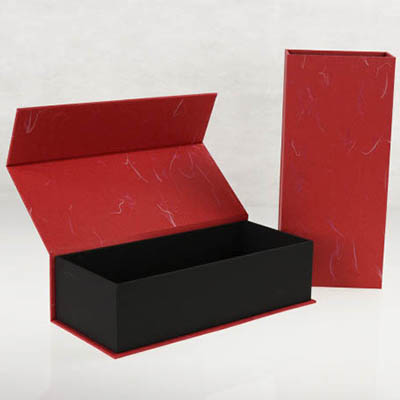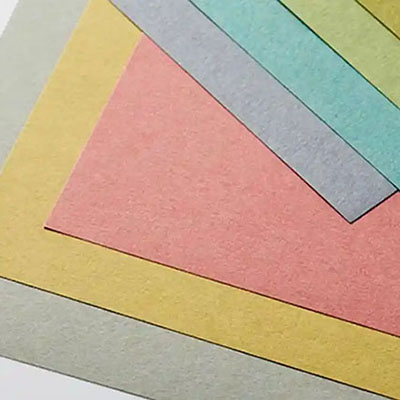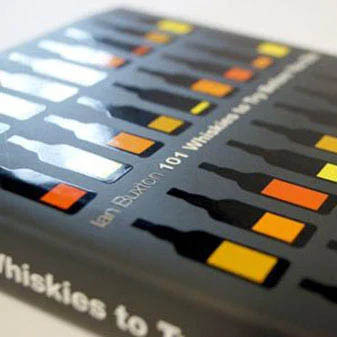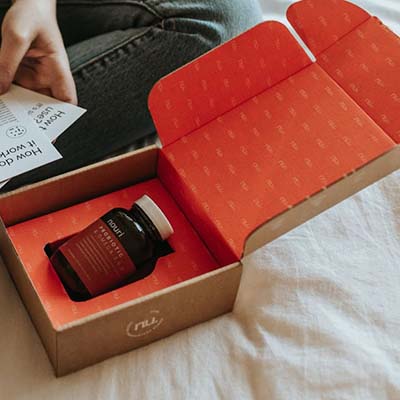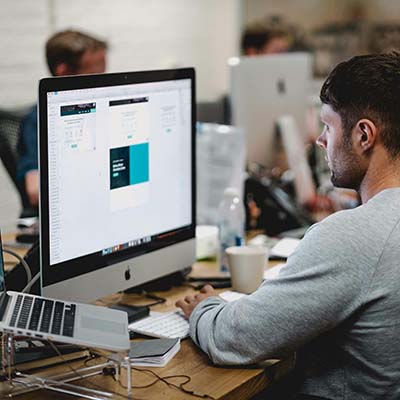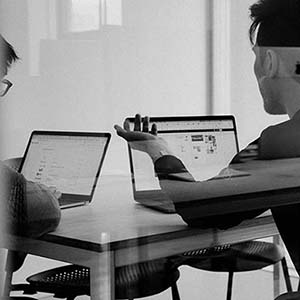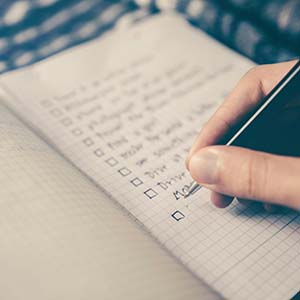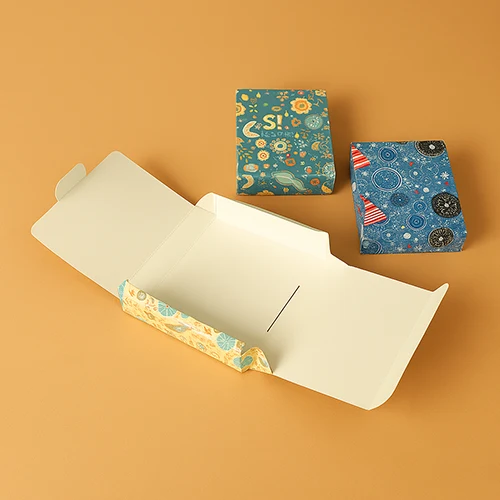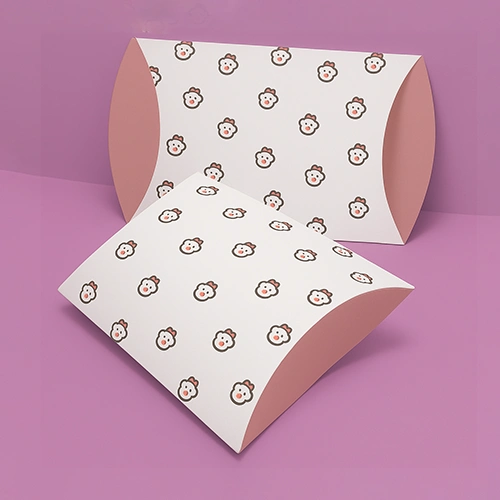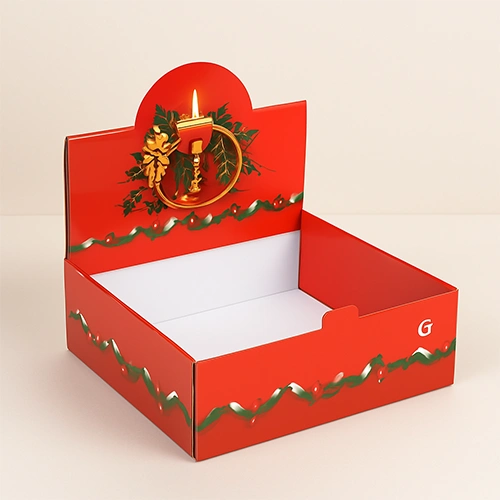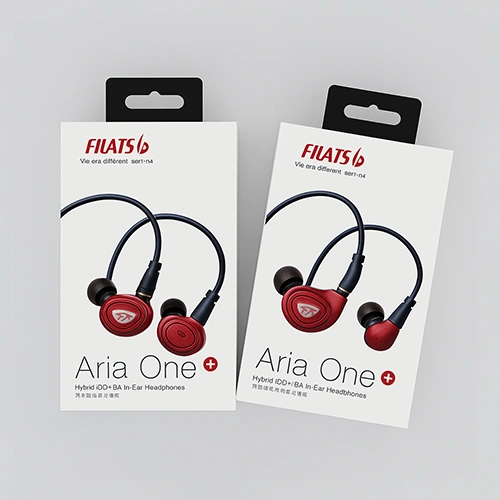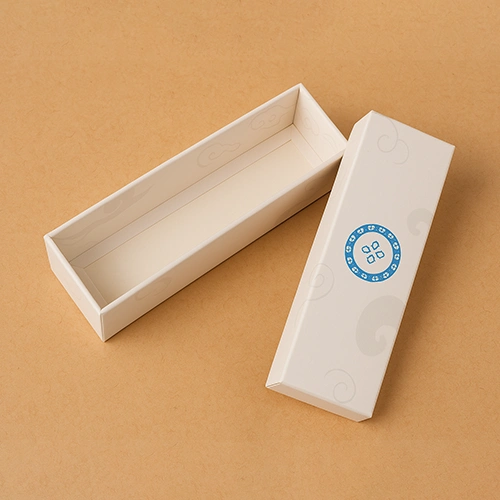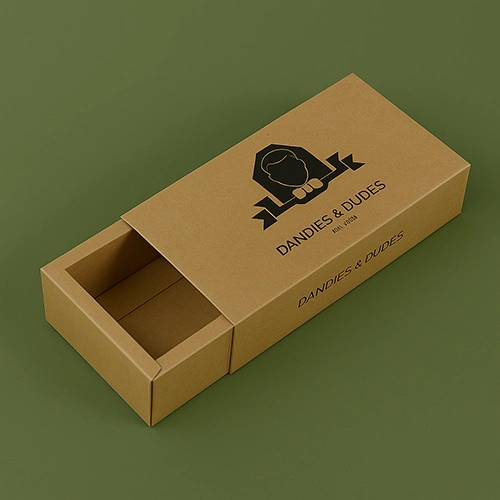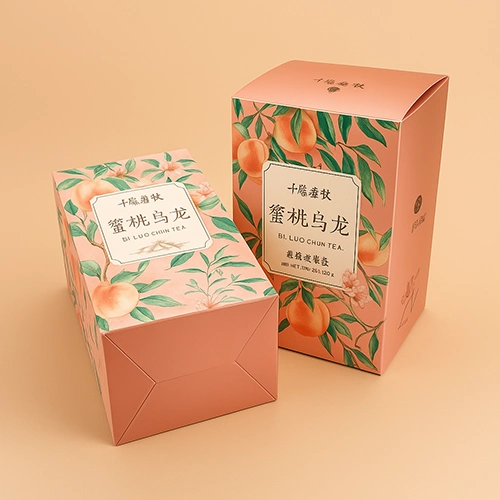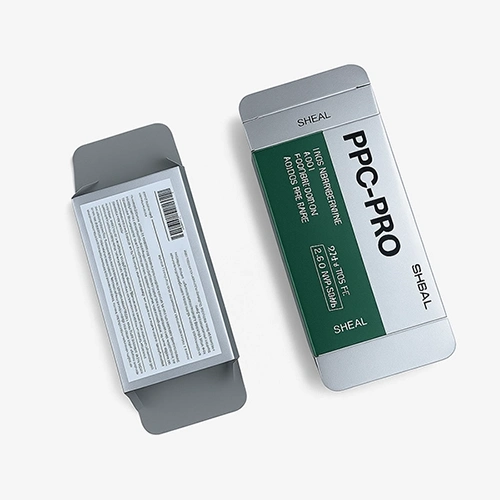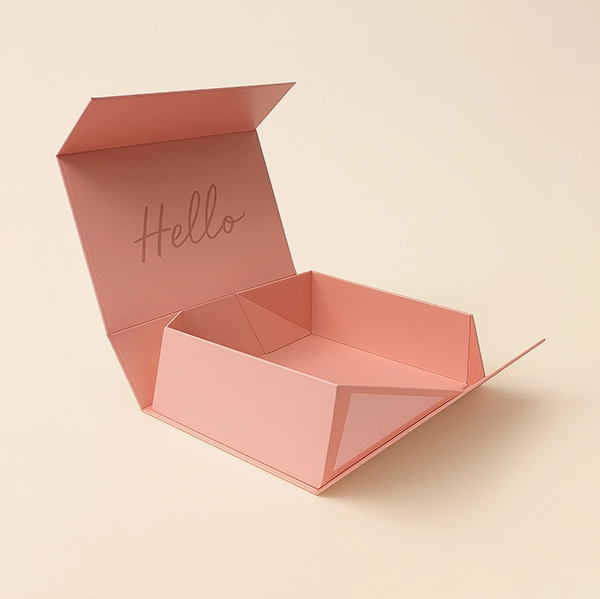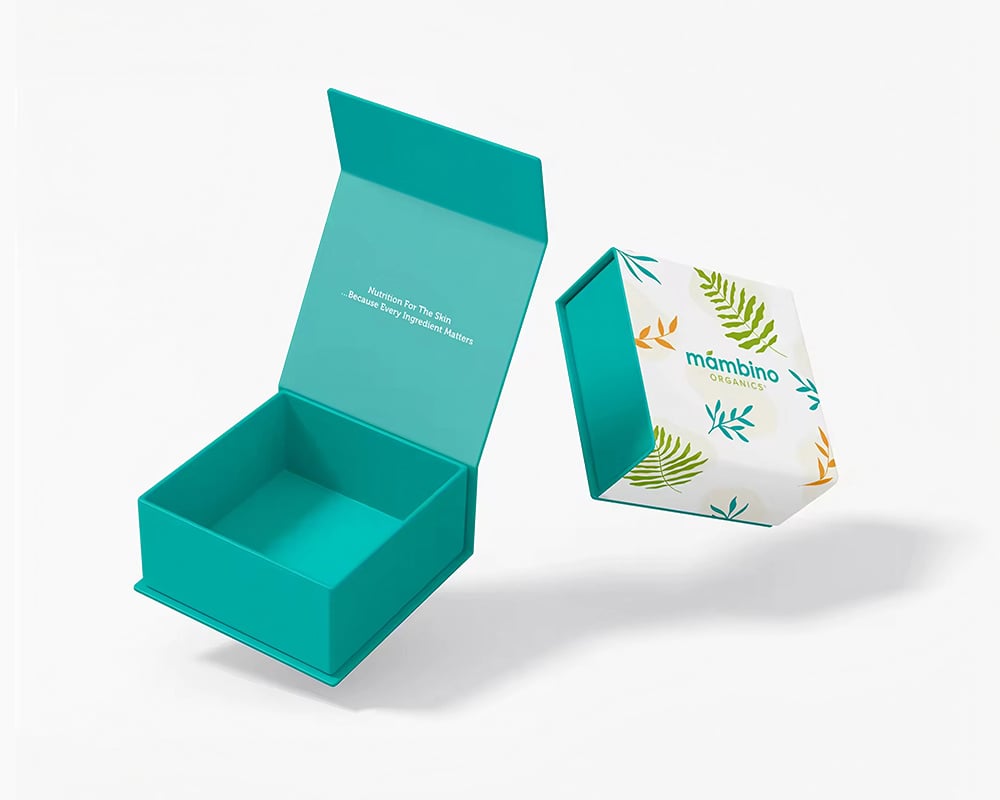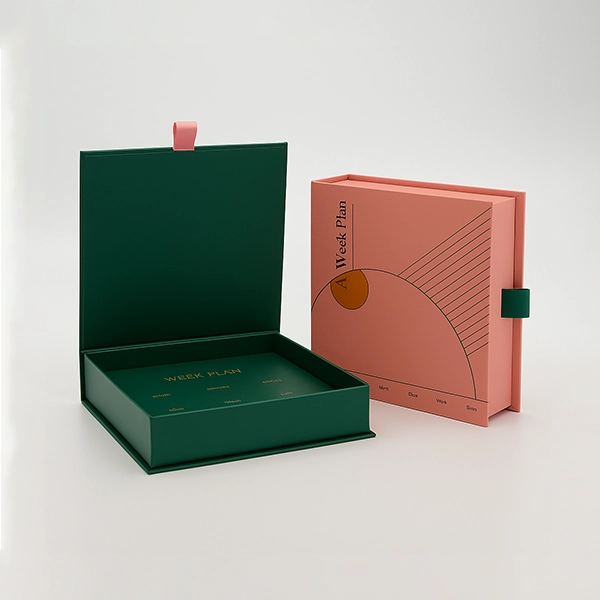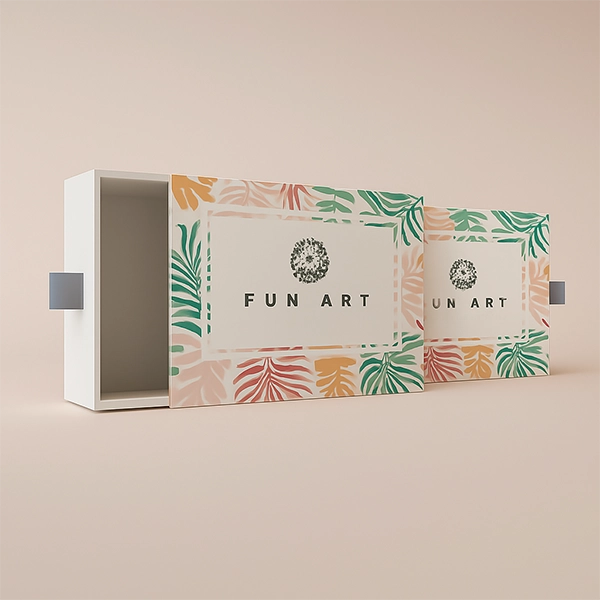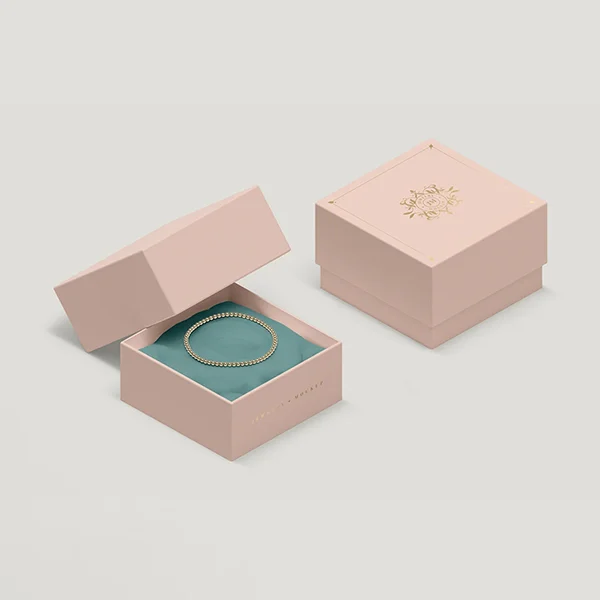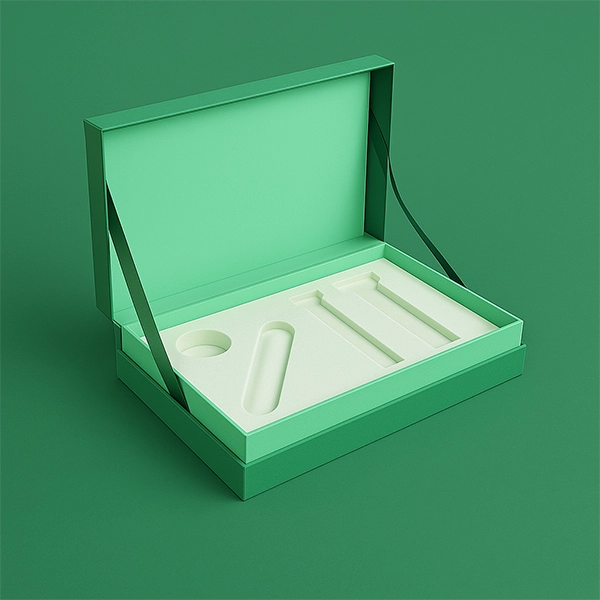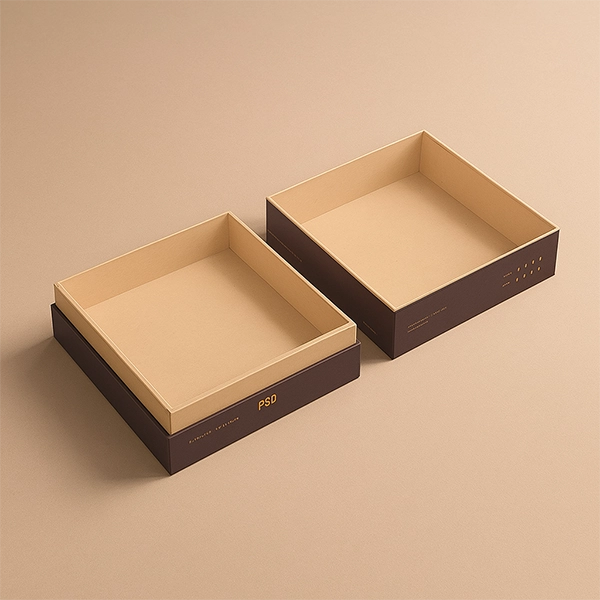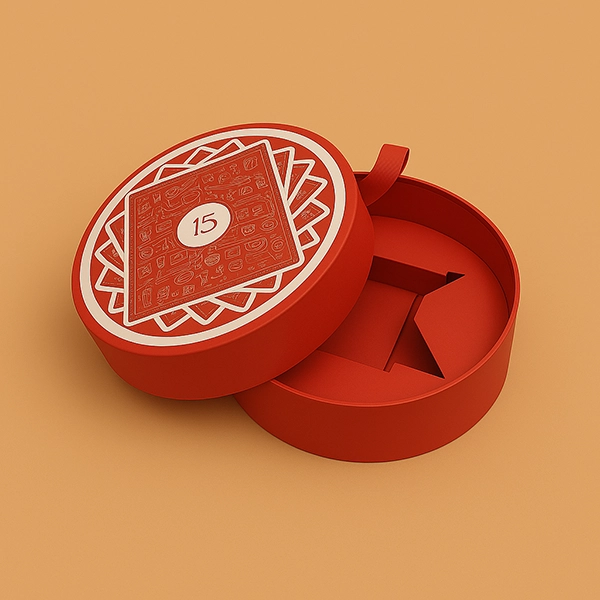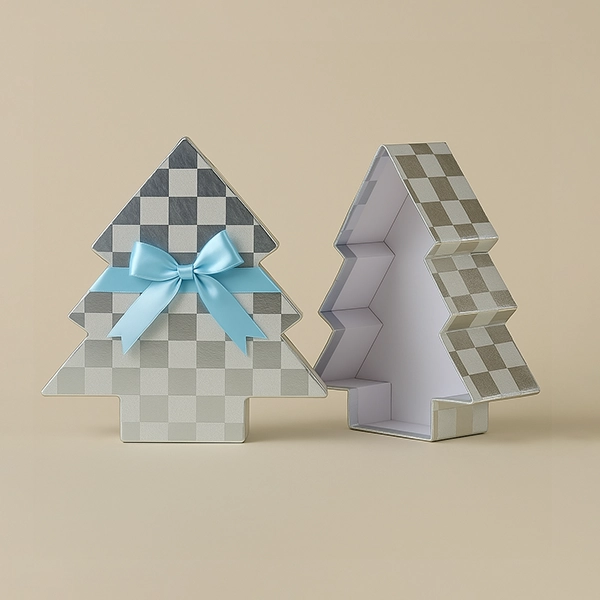A COMPLETE GUIDE:
Understanding Custom Packaging Solutions
This is a complete guide to custom packaging solutions in 2024. Explore how the right packaging can transform your brand, enhance customer experience, and embrace sustainability.
In this guide, you’ll learn how to:
Select the ideal packaging materials
Choose styles that enhance your product’s appeal
Create packaging that boosts your brand image
Seamlessly incorporate sustainability into your packaging strategy
And much more
Let’s get started!

Contents
Chapter 1:
The Fundamentals of Custom Packaging
In this chapter, you’ll learn how to determine the perfect box dimensions for your product.
According to our experience, getting the right measurements “makes all the difference” in packaging quality.
So it’s worth getting it right.
And it’s not just about fit. It’s also about style. Choosing the right box styles can ensure your packaging reflects your brand perfectly and elevates the overall experience.
If you want to master the fundamentals of custom packaging and make your product stand out, this chapter is for you.

Determining Box Dimensions
Measuring Your Product
Before diving into design and material choices, it’s crucial to determine the exact dimensions of your product. Accurate Length x Width x Height (LxWxH) measurements ensure a snug fit, minimizing movement during transit and reducing the risk of damage.
Length: Measure the longest side of your product.
Width: Measure the side perpendicular to the length.
Height: Measure from the base to the top of the product.

Understanding Interior and Exterior Dimensions
When determining box dimensions, it’s important to differentiate between interior and exterior measurements:
Exterior Dimensions: The total external size of the box, which affects storage and shipping.
Interior Dimensions: The internal size of the box that ensures your product fits perfectly without excess space, minimizing movement and potential damage.
The interior dimensions should be based directly on your product’s Length, Width, and Height (LxWxH) to ensure a snug fit. After determining these, the exterior dimensions are calculated by adding the thickness of the packaging material. This approach helps maintain the integrity of your product while also considering storage and handling requirements.
Note: Consider any extra space needed for protective elements like bubble wrap, foam inserts, or cushioning materials. Adding a small margin (usually around 1/8 to 1/4 inch) can ensure these protective materials fit without making the box excessively large.
Standard vs. Custom Sizes
Standard Size: Opting for standard box sizes can be cost-effective due to mass production. However, they may not perfectly fit your product, potentially compromising protection and presentation.
Custom Sizes: Custom dimensions offer flexibility and uniqueness, ensuring your product fits perfectly. While potentially more expensive, custom sizes enhance the unboxing experience and reflect a higher level of professionalism.
Understanding Box Styles and Structures
Selecting the right box style is crucial for both functionality and visual appeal. Different box styles serve different purposes, and choosing the appropriate one can greatly enhance product presentation and protection.
Common Box Types
1. Folding Cartons
Folding cartons, also known as paperboard cartons, are one of the most prevalent packaging styles in the retail industry due to their versatility and cost-effectiveness.They are easy to customize, suitable for products ranging from cosmetics to food items.
Overview
- Structure: Made from paperboard that is printed, laminated, die-cut, folded, and glued.
- Customization: Highly customizable in terms of size, shape, design, and finishing options.
- Assembly: Shipped flat to save space and reduce shipping costs; easily assembled when needed.
Types of Foldin Cartons
Design Considerations
- Material Selection:choose an appropriate thickness (measured in GSM) based on the product’s weight and protection needs. For lightweight products like cosmetics and small electronics, 250-300 GSM paperboard is ideal. For heavier or fragile items, opt for 350-400 GSM paperboard to ensure sufficient protection.
- Finishing Options: Enhance appeal with matte or gloss coatings, embossing, foil stamping, and UV spot treatments. These finishing techniques improve print quality and create a high-quality packaging finish, leaving a lasting impression on customers.
- Structural Integrity: Incorporate features like die-cut windows or inserts to improve functionality and display. Die-cut windows allow customers to see the product inside, enhancing trust and the unboxing experience. Custom inserts ensure products remain secure during transit, reducing damage and increasing customer satisfaction.
2. Rigid Boxes
Rigid boxes, also known as setup boxes, are associated with luxury and high-end products. They offer superior durability and a premium unboxing experience.
Overview
- Structure: Made from thick, condensed paperboard, wrapped in printed or decorated paper.
- Customization: Offers extensive customization in terms of shape, size, and design elements.
- Assembly: Delivered pre-assembled, as they are non-collapsible, ensuring structural integrity.
Types of Rigid Boxes
Design Considerations
- Brand Alignment: The packaging should reflect the brand’s luxury positioning and values.
- Unboxing Experience: Consider how the customer interacts with the packaging; layering elements can build anticipation.
- Sustainability: Use eco-friendly materials and finishes to appeal to environmentally conscious consumers.
3. Custom Mailer Boxes
Custom mailer boxes are specifically designed for shipping products directly to customers, combining durability with branding opportunities.


Overview
- Structure: Made from corrugated cardboard, featuring interlocking flaps and wings for secure closure without the need for adhesives.
- Customization: Can be fully customized with printing on both the exterior and interior surfaces.
- Assembly: Easy to assemble, saving time and labor costs.
4 Flexible Packaging
Flexible packaging encompasses a variety of materials and formats, including bags, pouches, and wrappers, that can be easily shaped and customized.


Overview
- Materials: Made from films, foils, paper, or combinations thereof, offering diverse barrier properties.
- Formats: Includes stand-up pouches, flat pouches, sachets, and wraps.
- Customization: High flexibility in terms of size, shape, and printing, catering to specific product requirements.

Looking for more box styles or expert advice? Contact us here to create your custom packaging solution.
Chapter 2: Material Selection in Custom Packaging
This chapter is all about materials.
We explore everything—from traditional paper-based options to cutting-edge eco-friendly and alternative materials.
Packaging materials are more than just a choice for aesthetics; they impact durability, cost, and the environmental footprint of your packaging. So you’ll learn how to select materials that balance these aspects perfectly.
Want to make sure you pick the right material? This chapter will guide you.

2.1 Types of Packaging Materials
Paper-Based Materials
Paper-based materials are widely used in the packaging industry due to their versatility, cost-effectiveness, and excellent print quality. They can be customized to fit a wide range of products and are suitable for various printing services, making them ideal for creating high-quality packaging that enhances brand image.
1. Kraft Paper
Known for its strength and durability, kraft paper is made from wood pulp. Ranging from 50–350 gsm, it is often used for bags, wrapping, and boxes. It is available in various forms, including natural brown, bleached white, or dyed black.
- Characteristics: High tear resistance, natural appearance, eco-friendly, recyclable, and biodegradable.
- Types: Natural brown kraft, bleached white kraft, dyed kraft paper.
- Grammage Range: 50–350 gsm.
- Applications: Ideal for shopping bags, product wrapping, packaging for organic or eco-friendly products, and as an outer layer for corrugated boxes.



2. Art Paper
Art paper is a high-quality coated paper known for its smooth surface and excellent printability. Ranging from 100–350 gsm, it is ideal for vibrant and detailed printing, making it perfect for custom printed packaging.
- Characteristics: Smooth finish, supports high-resolution images, available in gloss, matte, or satin coatings.
- Types: Gloss art paper, matte art paper, satin art paper.
- Grammage Range: 100–350 gsm.
- Applications: Used for product packaging, brochures, flyers, and promotional materials that require a premium look and feel.


3. Specialty Paper
Specialty paper includes unique papers such as textured paper, metallic paper, and other special finishes. Ranging from 100–400 gsm, it offers distinctive textures and visual effects that enhance the appeal of packaging.
- Characteristics: Unique textures and finishes, adds tactile and visual interest, enhances brand perception.
- Types: Textured paper (linen, ribbed), metallic paper, embossed paper, pearlescent paper.
- Grammage Range: 100–400 gsm.
- Applications: Used for luxury packaging, gift boxes, high-end product packaging, invitations, and premium marketing materials.



4. Corrugated Paper
Corrugated paper, also known as corrugated cardboard, is composed of a fluted corrugated sheet sandwiched between one or two linerboards. It is categorized by flute types rather than gsm, which determine its thickness, strength, and cushioning properties.
Characteristics: Strong and durable, provides excellent protection for products during transit, offers cushioning, recyclable, and eco-friendly.
Types: Single-wall, double-wall, and triple-wall corrugated cardboard.
Flute Types: Corrugated cardboard comes in various flute types such as A, B, C, E, and F Flutes, with thicknesses ranging from approximately 0.8 mm to 5 mm.
Applications: Ideal for shipping boxes, custom mailer boxes, subscription boxes, protective packaging, and retail packaging that requires both durability and high-quality printing.
Eco-Friendly Options
Recycled Paper: Utilizes post-consumer materials, reducing carbon footprint.
Biodegradable Materials: Break down naturally, minimizing waste.
Sustainable Sourcing: Certified by organizations like FSC to ensure responsible forest management.
Alternative Materials
Plastic: Biodegradable or recyclable plastics provide durability where necessary.
Fabric: Great for reusable, high-quality packaging like tote bags.
2.2 Material Properties and Considerations
Durability and Protection
-
Material Thickness: Measured in GSM (grams per square meter) for paper or flutes for corrugated cardboard. Thicker materials offer more protection.
-
Impact Resistance: Essential for fragile items; consider reinforced materials or additional protective features.
Cost and Availability
Premium packaging materials often cost more but they enhance brand perception. Finding the right balance between quality and budget is essential to ensure your packaging aligns with both your brand values and customer expectations without compromise.
Environmental Impact
Consider materials that minimize their carbon footprint throughout their lifecycle. Opt for options that are easy for customers to recycle, thereby supporting your sustainability initiatives.
Chapter 3: Printing Techniques and Finishes
Wondering how to make your packaging truly stand out?
In this chapter, we cover different printing techniques—offset, digital, flexography, and more. Each method has unique benefits, depending on your needs.
And it’s not just about the print. We also talk about special finishes—embossing, foil stamping, and spot UV—that help you create a lasting impression.
If you want packaging that wows your customers, you’ll find the answers here.

Printing Methods
Different printing methods offer various benefits tailored to specific needs in packaging and promotional materials.
1. Offset Printing
Offset printing is a traditional printing technique where ink is transferred from a plate to a rubber blanket, and then to the printing surface. This method is known for its high-quality output and color consistency.
Benefits:
- Cost-Effective for Large Runs: Ideal for high-volume printing, as the cost per unit decreases significantly with larger quantities.
- High Quality: Produces sharp images and vibrant colors, making it suitable for detailed graphics and large solid areas.
- Versatility: Can be used on a wide range of substrates, including paper, cardboard, plastics, and metals.
Limitations: Longer setup times and higher initial costs make it less suitable for small print runs compared to digital printing.


2. Digital Printing
Digital printing involves directly printing from a digital file onto the chosen material, using technologies like inkjet or laser printers.
Benefits:
- Quick Turnaround: Faster setup and production times compared to offset printing, making it ideal for short runs or on-demand printing.
- Customization: Easily allows for variable data printing, enabling personalized prints for each item (e.g., names on invitations).
- Lower Initial Costs: No need for plates or extensive setup, making it more economical for smaller quantities.
Limitations: While quality is generally high, it may not match the color depth and detail of offset printing for very large formats.

3. Flexography
Flexography uses flexible relief plates to print on various substrates, including plastic, metallic films, and paper. It is commonly used for packaging materials such as labels and corrugated boxes.
Benefits:
- Speed: High-speed printing capabilities make it suitable for long runs.
- Versatility: Can print on almost any substrate, including uneven surfaces.
- Eco-Friendly Options: Uses water-based inks that are less harmful to the environment compared to solvent-based inks.
Limitations: Initial setup can be costly due to plate creation; not ideal for short runs.

Color Models and Consistency
Understanding color models is crucial in the printing industry, particularly when it comes to achieving consistent and accurate color reproduction. Two primary color models used in printing are CMYK and Pantone (PMS), each with its own advantages and applications.
CMYK vs. Pantone (PMS)
CMYK: Stands for Cyan, Magenta, Yellow, and Key (Black). It is a subtractive color model used in color printing, where colors are created by layering these four inks in varying proportions.
Pantone (PMS): The Pantone Matching System is a standardized color reproduction system that assigns specific numbers to colors, allowing for precise color matching across various materials and processes.

- Color: Cyan, Magenta, Yellow, Black
- Subtractive Mixing
- Color Accuracy: May Have Slight Variations
- Limited Color Possibilities
More Cost-effective - Usage: Full-color Images and Photographs

- Color: Various (Pantone Matching System)
- Pre-mixed Colors
- Color Accuracy: Precise
Extensive Color Possibilities - Higher Cost Due to Specialized Inks
- Usage: Brand-specific Color Matching
Color Proofs
Color proofing is a crucial process in the printing industry that involves creating a sample of the printed material to ensure color accuracy and consistency before the final production run. It serves as a visual representation of how the final product will appear, allowing designers and clients to review and approve colors.
Types:
- Soft Proofing: Involves displaying colors on a screen to simulate how they will appear in print. This method is quick and cost-effective but may not perfectly match the final output.
- Hard Proofing: Involves printing a physical sample of the design, providing a more accurate representation of the final product. This method is more reliable for color matching.
Surface Treatments and Special Finishes
Specialty finishes enhance the tactile and visual appeal of printed materials, providing additional value and distinction.
Embossing and Debossing
Embossing raises specific areas of the print to create a three-dimensional effect, while debossing creates an indented effect. Both techniques use metal plates to achieve the desired texture.
Benefits:
- Adds a tactile dimension that enhances user engagement.
- Ideal for business cards, stationery, and luxury packaging where a sophisticated appearance is desired.
Applications: Commonly used in high-end branding materials to convey quality.


Foil Stamping
Foil stamping applies metallic or pigmented foil onto a substrate using heat and pressure. This process creates shiny, reflective designs that stand out visually.
Benefits:
- Provides a luxurious look that can elevate brand perception.
- Available in various finishes (e.g., matte, glossy) and colors (e.g., gold, silver).
Applications: Frequently used on packaging, labels, and promotional materials to highlight logos or important text.


Spot UV Coating
Spot UV involves applying a glossy coating to specific areas of a printed piece while leaving other areas matte. This contrast draws attention to particular elements of the design.
Benefits:
- Enhances visual interest by creating depth through contrast.
- Durable finish that protects against wear while adding an eye-catching sheen.
Applications: Commonly used in business cards, brochures, and packaging where certain features need emphasis.


Soft-Touch Coating
Soft-touch coating provides a velvety texture that enhances the tactile experience of printed materials. This finish can be applied over full surfaces or selectively.
Benefits:
- Creates an inviting feel that encourages interaction with the product.
- Offers some protection against scratches while enhancing visual appeal.
Applications: Often used in premium packaging solutions and marketing materials aimed at luxury markets.


Chapter 4: Additional Packaging Elements
It’s the small details that matter most.
In this chapter, we look at additional packaging elements like inserts, dividers, labels, and tissue paper. These elements not only protect your product but also enhance the overall unboxing experience.
The goal is to make each interaction with your brand memorable, and these touches can elevate that experience.
If you want your packaging to be unforgettable, read on.

In addition to the primary packaging materials, several additional elements can enhance the functionality, aesthetics, and overall presentation of custom packaging solutions. These elements include custom inserts and dividers, labels and stickers, and wrapping and tissue paper.
Custom Inserts and Dividers
Custom inserts and dividers are tailored components designed to fit within packaging to protect products, organize items, and enhance the unboxing experience. They commonly used in electronics packaging, cosmetics boxes, and gift sets where product arrangement is essential.
Types of Inserts
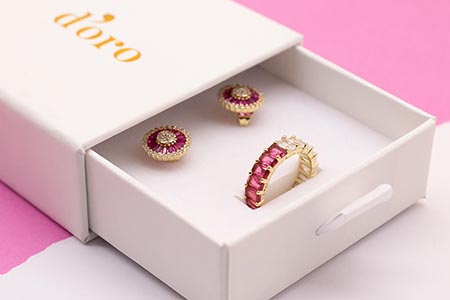


| Insert Type | Description | Protection Level | Sustainability |
|---|---|---|---|
| Foam Inserts | Lightweight and customizable, foam inserts provide excellent cushioning for fragile items like electronics and jewelry. | High | Low (petroleum-based materials) |
| Corrugated Cardboard Inserts | Made from layered cardboard, these inserts offer moderate protection and can be easily customized for branding. | Medium | High (recyclable and biodegradable) |
| Molded Pulp Inserts | Eco-friendly inserts made from recycled paper, molded to fit products snugly for added protection. | Medium-High | High (recyclable and biodegradable) |
| Blister/Plastic Inserts | Clear plastic molds that display and protect products while providing visibility; ideal for retail packaging. | High | Low (non-biodegradable) |
Labels and Stickers
Custom labels and stickers are printed materials applied to packaging to provide information, branding, or decorative elements. They are used on food packaging, retail products, promotional items, and shipping boxes to enhance visibility and communication.
Wrapping and Tissue Paper
Wrapping paper and tissue paper are lightweight materials used for wrapping products or filling voids in packaging. They are commonly used in retail environments for gift items, as well as in e-commerce shipments to create a memorable unboxing experience.
Chapter 5: Streamlining Your Custom Packaging Process
Ready to get started with custom packaging?
This chapter is all about taking practical steps to improve efficiency. From planning and design to managing logistics and continuous improvement—every aspect contributes to making your packaging workflow smooth and cost-effective.
This chapter provides you with practical strategies to take your custom packaging process to the next level and bring your ideas to life.

Streamlining Your Custom Packaging Process
To truly streamline your custom packaging process, it’s essential to focus on efficiency, risk management, and collaboration. Here are three key strategies to help you create a more effective and cost-efficient custom packaging workflow.
Optimized Planning and Design
Effective planning and design lay the foundation for a streamlined process. Here are some practical steps:
Define Clear Goals: Establish clear packaging requirements and brand goals to minimize confusion and wasted efforts. Use pre-built templates and rapid prototyping tools to quickly create and iterate on designs.
Align Stakeholders Early: Ensure all stakeholders are aligned on packaging specifications and timelines from the beginning. Misalignment can lead to costly delays.
Standardized Design Procedures: Use standardized design checklists and involve cross-functional teams to review designs, avoiding errors such as incorrect sizing or overlooked printing details.
Production Management and Supplier Collaboration
Smooth production depends on effective collaboration and proactive management of resources.
Establish Milestones: Set clear milestones, such as design finalization, prototyping, and production start, to ensure a structured approach. Regularly check in on each stage to catch and resolve issues early.
Work with Trusted Suppliers: Develop strong relationships with suppliers and maintain a backup supply chain to prevent material shortages or delays. Regular communication and status updates are critical for avoiding production bottlenecks.
Quality Assurance Integration: Integrate quality checks at multiple points in the production process to ensure consistent output without interruptions.
Logistics and Continuous Improvement
An efficient logistics strategy and ongoing refinement are crucial for sustained efficiency.
Reliable Logistics Partnerships: Work with logistics providers who offer reliable timelines and integrated tracking systems. This ensures transparency and helps meet customer delivery expectations.
Gather Customer Feedback: Once your packaging is in use, gather customer feedback on their experience. Use surveys or direct reviews to gather insights that help refine future packaging iterations and further streamline processes.
Data-Driven Improvements: Analyze logistical data and customer feedback to identify areas for improvement and implement changes that enhance efficiency in future runs.
Chapter 6: Collaborating Efficiently with Packaging Providers
Working with the right partner can make or break your custom packaging experience.
This chapter helps you understand what to look for in a packaging provider—how to manage production, pricing, and logistics to ensure everything aligns with your brand and business needs.
Want a smooth and successful partnership? This chapter will show you how to find it.

How to Choose the Right Packaging Provider for Your Brand
Selecting the right packaging provider is crucial for a successful custom packaging solution.
Key Factors to Consider: Evaluate the provider’s capacity to meet your production volume, quality control capabilities, adherence to timelines, and flexibility to scale production. It’s also valuable to review certifications such as ISO and FSC to ensure compliance with industry standards.
Effective Communication with Your Provider
Set Clear Expectations: Communicate all project details, including materials, design requirements, timelines, and budget. Providing visual references like prototypes helps ensure that your provider fully understands your requirements.
Define Milestones: Break the project into smaller milestones, such as sample approval and final production. Clearly outline each phase to help manage expectations and facilitate a smoother process.
Best Practices for Iterations and Revisions
Efficient Sample Review: Establish clear deadlines for sample feedback and consolidate comments from all stakeholders. This prevents conflicting revisions and keeps the project on schedule.
Chapter 7: Custom Packaging for Different Industries
Who benefits from custom packaging?
In this chapter, we highlight different industries—from e-commerce to beauty, food, and electronics—that have successfully leveraged custom packaging to stand out.
Every industry has unique needs, and custom packaging can help brands across sectors build loyalty and elevate customer experience.
If you’re looking to understand how custom packaging applies to your industry, check this chapter out.
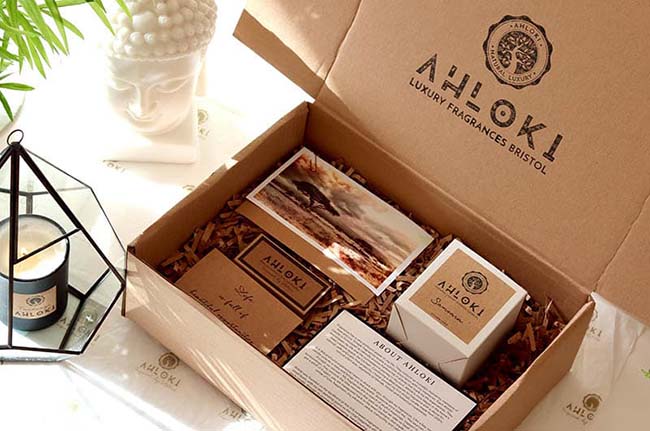
Custom Packaging Solutions for Luxury Goods
Elevate Brand Value: To appeal to the high-end market, use premium materials like rigid boxes with specialty features such as magnetic closures, velvet inserts, and gold foil stamping. Luxury packaging should evoke exclusivity and create a memorable unboxing experience that reinforces the brand’s prestige.
Packaging Solutions for E-commerce Businesses
Key Elements for E-commerce: Focus on lightweight yet durable materials to keep shipping costs low while maintaining product safety. Incorporate brand graphics and simple assembly designs that enhance customer convenience, ensuring a satisfying unboxing experience.
Packaging in Food and Beverage Industry
Meeting Industry Standards: Food and beverage packaging needs to ensure product safety, maintain freshness, and adhere to regulatory requirements. Consider using food-grade materials, sustainable options, and custom inserts to secure the product during transit.
Chapter 8: Practical Tips for Optimizing Your Custom Packaging
Effective implementation is key to success.
This chapter guides you on how to keep your custom packaging consistent, focus on delivering a standout unboxing experience, and ensure sustainability remains a priority.
If you want to implement custom packaging that makes an impact, this chapter will give you the insights you need.

Cost Efficiency and Budget Management
Balancing Quality and Cost: Choose impactful but cost-effective features like embossing or matte coatings to convey quality without excessive expenses. Utilize bulk order discounts where possible to reduce the per-unit cost of packaging.
Sustainability in Custom Packaging
Use Eco-Friendly Materials: Incorporate recyclable materials and water-based inks to align your packaging with current sustainability standards. Highlight these features on the packaging to appeal to eco-conscious consumers.
Optimizing Unboxing Experience for Customer Satisfaction
Innovative Elements: Include unique touches like die-cut windows for product visibility or personalized thank-you notes inside the box. These details contribute to a memorable unboxing experience, fostering customer loyalty and encouraging social sharing.
Conclusion
Ready to make your custom packaging process more efficient and impactful?
This guide has provided you with the key steps to optimize your custom packaging—from selecting the right materials and box styles to improving your unboxing experience. Whether you’re aiming to enhance sustainability, reduce costs, or improve brand loyalty, these strategies will guide you toward creating a streamlined and effective packaging solution.
By applying these insights, your custom packaging will not only protect your products but also reflect your brand’s identity, leaving a lasting impression on your customers.
Start implementing these strategies today, and elevate your packaging to new heights!


